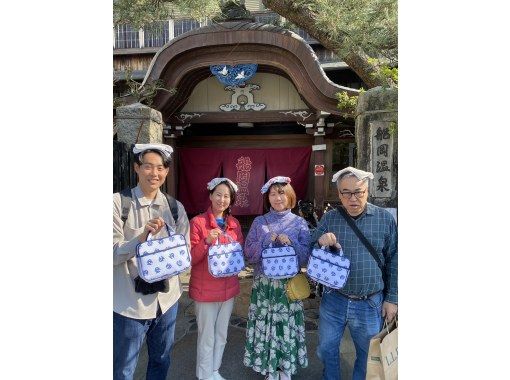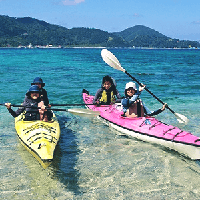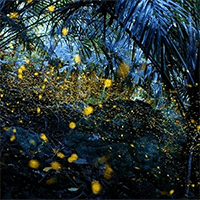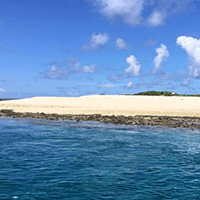- Age 0~Age 100
- 1~2 hours
- 10:00 / 13:30 / 15:30
We will guide you through the site of Koto Nishikori Studio, which produces traditional textiles at Kyoto. You can see Nishikiori's works, restored textiles, restored Takaki. Families, friends, those interested in textiles, school excursions, university seminars, lifelong learning, etc. can be enjoyed from children to seniors. Korin Nishikori Kobo is a workshop established by textile artist Korin Tatsumura. One postcard per person and a special photo taken with a precious high machine.
- Age 7~Age 100
- 1~2 hours /2~3 hours
- 10:00 / 13:30 / 15:30
This is a plan to experience making accessories using the world-famous Japanese art "Nishiki" and to visit the workshop. Choose one from earrings, pierced earrings, brooches, macaron straps, hair ties, and tie pins. You can take home the completed work on the day. You can also go shopping. Textiles used for accessories are available at the workshop. (It cannot be woven.)
- Age 13~Age 100
- 2~3 hours /3~4 hours
- 10:00 / 13:30
It is a plan of about 3 hours to experience weaving about 18cm square foil fabric and to visit the workshop. The completed work is On the day You can take it home. Weaving is easy. Please experience the technique of the weaver. You can see and touch the world's best artworks in Japan, and have a valuable experience of knowing history. * Bonus: Take a picture on a restored high aircraft. Original postcard presentation. You can also shop. One weaving machine for the weaving experience is available.
丁寧にご指導いただき、2時間程でなんとか出来上がりました。最初はどうなるかと思いましたが、だんだん慣れてきて楽しくなりあっという間に終わってしまいました。詳しく説明しながら素敵な作品をたくさん見せていただきました。ありがとうございました。
- Age 10~Age 100
- Over 6 hours on the day
- 09:00
★The Kyoto Round Trail is a hiking course with a total length of approximately 70 km that starts from Fushimi Inari in the southeast of Kyoto, passes through Mt. Hiei, goes around Kitayama, and goes from Kiyotaki in the west to Arashiyama. This is a trail course blessed with quiet nature where you can walk on well-maintained roads. ★The main course of the Higashiyama & Kitayama course can be easily divided into 5 parts, and you can enjoy the trail while stopping at sightseeing spots.・1st visit: Fushimi Inari ⇒ Keage (Fushimi Inari, Sennyu-ji, etc.) Walk 10.3km ascent 400m, descend 350m ≪Meet≫ 9:00 AM Keihan Fushimi Inari Station ・2nd visit: Keage ⇒ Ginkakuji (Nanzenji, Daimonji, Ginkakuji) etc.) Walking 7.10km ascent 440m descending 380m ≪Meeting≫ 9:00 AM Kyoto Subway Keage Station ・3rd trip: Ginkakuji ⇒ Mt. Hiei (Ginkakuji, Mt. Hiei, etc.) Walking 7.20km ascending 620m descending 50m ≪Meeting≫ 9:00 AM Ginkakuji-mae bus stop ・4th time: Mt. Hiei ⇒ Oharado Temple (Mt. Hiei, Sanzen-in, etc.) Walk 9.80km Ascent 450m Descent 830m ≪Meet≫ 9:00 AM Cable Yase Station ・5th time: Oharado Temple ⇒ Yamasachi Bridge (Kurama Temple, Kibune Shrine, etc.) Walk 12.1km Ascent 260m Descend 320m ≪Meeting≫ 9:00 AM Todera bus stop★Meeting place and time are negotiable★Please make a reservation on the first day of participation. Please select your desired dates for your second and subsequent participation.
- Age 0~Age 100
- Over 6 hours on the day
* The required time for a one-day charter is 10 hours (including driving time). * If the departure point is outside Osaka, the driver's round-trip time will be deducted. For continuous charter trips of more than two days (if the return destination is outside Osaka on the same day), the driver's accommodation fee of 10,000 yen per night will be borne by the customer to prevent the driver from becoming fatigued. *A day tour of popular Osaka sightseeing spots in a comfortable chartered tourist hire car. *You can freely choose the departure time according to your request, and you can freely customize the itinerary and sightseeing spots according to your request. *Tourist hire cars are available in vehicles suitable for 6 and 9 seats, and we also provide pick-up and drop-off services, so you can arrive at your destination safely and comfortably. *All vehicles provided comply with Japanese law, and our drivers have more than 3 years of driving experience. *We provide services in multiple languages, including Japanese, Chinese, Cantonese, and English. *Osaka Day Tour (Example)* *8:55 A tourist taxi will pick you up. (If the departure point is not Osaka, the driver's round trip time will be deducted.) The driver will arrive at the departure time and wait at the pre-designated location. *9:30 Experience Osaka's fashion trends in Shinsaibashi Shinsaibashi is a busy shopping district in Chuo-ku, Osaka City, Osaka Prefecture. The winter illumination resort "Midosuji" and the fashionable town "American Village" are also popular tourist spots in Osaka. The Glico logo, the symbol of Osaka, is also in Shinsaibashi. *11:00 Visit Namba Yasaka Shrine Namba Yasaka Shrine is located in Naniwa-ku, Osaka City, Osaka Prefecture. It is a shrine that enshrines Mount Suishu, Kushida Himio, and Akatsuki Hachikyo. The symbol of Namba Yasaka Shrine is the huge lion hall. It is said that lions attract evil spirits and bring good luck, and they are popular as power spots in modern Osaka, and many people take photos of them. *12:00 Enjoy delicious Japanese cuisine for lunch We will guide you to a traditional Japanese restaurant for lunch. Please enjoy the delicate taste of Japanese cuisine! *13:00 Enjoy a panoramic view of Osaka from Tsutenkaku Tsutenkaku is located in Shinsekai, the central area of southern Osaka City. Its name means "a tall building leading to heaven." The statue of Billiken, the god of happiness, is a popular symbol, and it is said that stroking the soles of his feet will bring you happiness. From the observation deck on the fifth floor, you can get a panoramic view of Osaka city, and it is a tourist spot visited by one million people every year. In addition, the circular neon lights attached to the top show the weather forecast for the next day based on the color combination. (If the final destination is not Osaka, the driver's round-trip time will be deducted.)
- Age 12~Age 75
- Within 1 hour
Let's explore the history of Shimabara, which is deeper the more we know about it. In fact, Shimabara is a common name, and the original place name is Nishishin-yashiki, and the name Shimabara comes from the Shimabara Rebellion in Kyushu. A walk around the town of Shimabara, the past and present. The history of the red-light district and prostitutes is by no means shallow, and there are customs (traces) that continue to this day. Through the history of Shimabara, you can even get a glimpse of Japanese history. All of the courses you will follow are spots related to Shimabara. This time, we will explore Shimabara, which has never ceased to attract men from all over the world, from a historical perspective! Shimabara Red Light District is a hidden spot in Kyoto that is open even on weekends! The reason it is a hidden spot is that even if you walk around alone with tourists, there are few historical explanations and it is difficult to understand the highlights. If you join my plan, I will explain the highlights of Shimabara, so your understanding will be greatly improved. [Course Contents] ① Remains of Suzaku-oji Right next to Shimabara was Suzaku-oji, the main street of the Heian period. The road is 84 meters wide, so you can imagine how wide it was. ② Remains of the Kaburenjo The Kaburenjo, where the prostitutes practiced, was demolished with the decline of Shimabara, but the sacred tree and photos from that time are on display. ③ Shimabara Daiginkyou Benzaiten Shrine The sacred tree of Shimabara Sumiyoshi Shrine was located within the shrine grounds, but it is now located in a different place due to the influence of the anti-Buddhist movement during the Meiji Restoration. ④ Shimabara Sumiyoshi Shrine It is known as a matchmaking shrine by locals. ⑤ Shimabara Nishimon Monument The red-light district only has one gate, but Shimabara has two. There was originally only one, but there was a reason why Shimabara needed two gates to prosper. ⑥ Remains of Higashi Korokan There was originally a guest house called Higashi Korokan in the Shimabara area of the entertainment district. ⑦ Kadoya Hospitality Culture Museum (exterior only) Kadoya, famous for the Shinsengumi. It is what we would call a high-class restaurant today. ⑧Wagaya This is the only brothel still in operation in Shimabara. ⑨Shimabara Daimon Ryoma Sakamoto and the Shinsengumi actually passed through Shimabara Daimon when they came to Shimabara. This is a place where you can feel the history deeply. If you would like to participate on a day other than the event or if you would like to apply as a group, please contact us. [Price includes] Guide fee
- Age 12~Age 65
- 1~2 hours
Like the tea ceremony and calligraphy, sento (public baths) are one of the most important traditional cultures in Japan.What is the correct way to take a bath? Are there any bathing etiquette? Our bathing specialists will answer any questions you may have about bathing, and then you will actually try bathing!This experience is a new experience that traces the history of sento (public bath) culture and allows you to experience it for yourself, and it can also help you become healthier.Orientation will be held at a cafe that used to be a sento (public bath). During the orientation, we will explain the 1300-year history of Japanese public bath culture and give you a paper summarizing recommended bathing methods, so you can deepen your understanding of public bath culture and bathing methods.After that, you will practice the bathing method we explained to you at Funaoka Onsen.Why not experience Japan's sento culture, which boasts a rich tradition, with all your senses?
最近チェックしたプラン
Please wait a moment
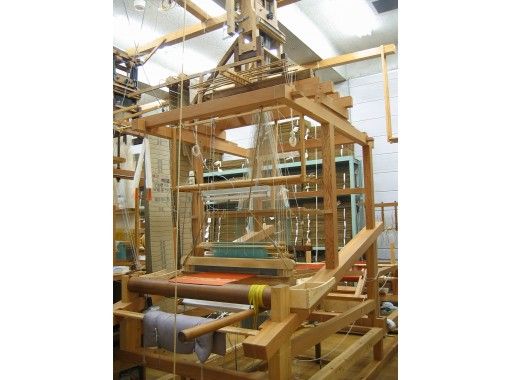
![[Kyoto] Handmade accessories and a tour of the textile workshop at the longed-for "Nishikiori"の画像](https://img.activityjapan.com/10/14027/10000001402701_ODRrWm5O_3.jpg?version=1610608245)
![[Kyoto] Weaving experience-Experience weaving foil & visit the workshop-Experience the weaver's technique!の画像](https://img.activityjapan.com/10/21849/10000002184901_ODRrWm5O_3.jpg?version=1609211511)
![[Kyoto/Fushimi] Kyoto Round Trail (Higashiyama & Kitayama: 5 divisions) Fushimi Inari starts!の画像](https://img.activityjapan.com/10/53209/10000005320901_GFm6c9nj_3.jpg?version=1734370262)
![[Osaka Area] Custom-made 10-hour day tour in a sightseeing hire car with a dedicated driverの画像](https://img.activityjapan.com/10/51697/10000005169701_qq3ujhDK_3.jpg?version=1719795783)
![[School trip for adults] To Shimabara, a red-light district known as one of the three major red-light districts in Japanの画像](https://img.activityjapan.com/10/58924/10000005892401_te5j6wgB_3.jpg?version=1745508125)
